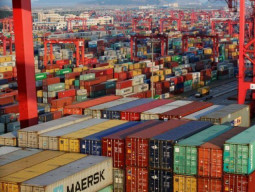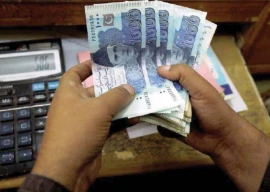
Yes, Islamabad, for he is the man who was the “creator” of Pakistan’s first and so far, only planned city. But Islamabad is a far cry from what it was. It is a mutation, and a disfigured remnant of the modern and sleek metropolis that Constantin visualised, planned and eventually created.
Terrorists and motorists, between themselves, have done to Islamabad what many city planners and architects have been unable to do in most other cities. They have successfully managed to get Islamabad’s original geography changed to suit their needs. Both these groups, terrorists in their stolen trucks and motorists in their leased limousines, couldn’t have done a more effective job if they had actually planned to work together.
Now, with all those police pickets and road blocks and the maze of under- and over-passes, it looks like the Greek architect’s dream city has turned into a nightmare.
The earlier settlers of the capital who moved to Islamabad in the sixties probably won’t be able to find their way around town now if they ventured beyond Aabpara or crossed Zero Point - nowadays Pakistan’s Ground Zero from the looks of it - towards what was later came to be known as the Peshawar Mor. For that matter the, tree-lined Nazimuddin Road that one took to affable Karachi Company now leads to nowhere. You will have to beat a retreat as this lovers’ lane has been blocked a hundred yards hence of the grotesque roundabout by the newly built overpass. A more disastrous feat of road engineering one would not come across anywhere unless one has driven beyond the Convention Centre and performed the mandatory tawwaf of the gigantic circular monstrosity, and emerged in one piece, wondering what saved one from being run-over by the rickety hulk of a police lorry, or the devil-may-care CDA tanker throttling away towards Chak Shehzad. You need a map, now for crossing from F to G sectors, and an atlas for lost souls to reach the graveyards in the neighbourhoods in I and H.
It would have been great if Islamabad had rubbed off on the rest of Pakistan. It was too much to hope for, we all feared this would happen, hoped it wouldn’t. Pakistan has rubbed off on Islamabad. It is assuming more and more of the common characteristics that mark our cities – general squalor, congestion, bedlam, and worsening facilities for the common man.
But there are good things as well that have happened to Islamabad. From the diplomatic colony it used to be thirty or forty years back, it is now a bustling city. Its citizens now own it. Most do not go back their home towns deserting the duty station on festivals like Eid. Culturally too the scene is livening up what with a number of art galleries, the PNCA staging plays and an erstwhile dormant civil society becoming more responsive to national issues. But there is no cinema. Since the closure of the cinemas run by the National Film Development Corporation (Nafdec) and the vandalising of the revived Melody by madressa hooligans, Islamabad is perhaps the only capital city in the world which has no cinema.
Terrorists have made a definite impact on the city’s life. Much before the road blocks and police pickets appeared on thoroughfares the only functioning libraries, the one run by the British Council in the Melody complex and the other more spacious American Center on the Jinnah Avenue had been locked up. With the steep rise in the cost of books these libraries could have sustained the reading interests of the public, but I guess this is what happens when town planners have priorities that are not on the same page as those of the common man. But then Islamabad is no common city, and is not for the common. The city planners can very well turn to them and say that this city was never built for you, so grin and bear it.
Alas those who got them closed have no interest in learning or knowledge of any kind. Mr Lashari, the former CDA chairman, who was something of a doer, had a mind to open public libraries in all sectors, and many people were ready to donate part of their personal libraries to such a facility in their neighbourhood, but the gentleman got busy in more fancy projects.
Similarly, Islamabad has never had a place like Lahore’s Pak Tea House or Rawalpindi’s Cafe de Vogue’s where writers, journalists, media persons and others of the tribe could sit for a chat over tea and waste long hours in useless conversation at an affordable price. In all cities of the world where culture flourishes such tea houses and restaurants are known art joints.
The PNCA has ample space but little imagination for such a corner. For the ‘well connected’ town gossip the five-star haunts have turned into security bunkers and no longer provide the ambience that helps loosen tongues. The strings of fancy restaurants that have come up in recent years are not the kind of places where one goes for making conversation or discussing poetry. One goes there to be seen, to show that one has ‘arrived’.
For the common man, the capital is an inhospitable place. It is the most expensive city of the country where food, education, housing and health cost more than any city of the Western world if cost of living is indexed on the scale of incomes. Life is exciting for the keen observer though. I do not know if anyone has noticed that pumpkins and brinjals, once the cheapest of vegetables and the poor man’s fodder, are selling at the same price as apples and peaches.
Now it looks and feels more and more like the capital of Pakistan. The writer is a freelance contributor. He can be reached at
mushir.anwar@gmail.com
Published in The Express Tribune, October 28th, 2010.












































COMMENTS
Comments are moderated and generally will be posted if they are on-topic and not abusive.
For more information, please see our Comments FAQ